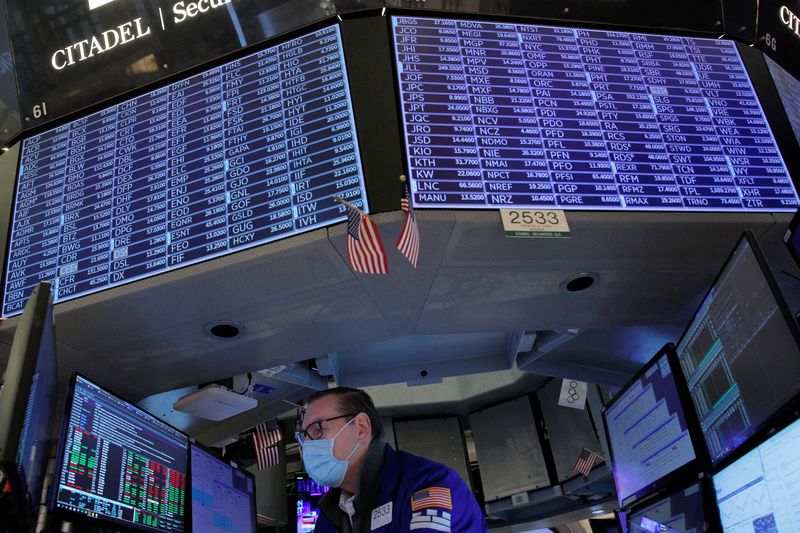By Patturaja Murugaboopathy
– U.S. high yield bond exchange-traded funds saw record monthly outflows in January as investors ditched assets likely to be hit by an increase in market volatility and aggressive rate rises by the Federal Reserve.
According to Refinitiv Lipper, U.S. high yield bond ETFs recorded an outflow of $6.5 billion in January, the highest ever.
(Graphic: Monthly flows into U.S. high yield bond ETFs: https://graphics.reuters.com/GLOBAL-MARKETS/znpnejzgxvl/chart.png)
“More than any other financial asset, high yield bonds are extremely sensitive to Fed policy, because they encompass both credit spreads and long dated yields. Both of which should deteriorate as the Fed tightens policy,” said Julian Brigden, president at research firm Macro Intelligence 2 Partners, based in Colorado.
While the Fed has made clear it is on an accelerated path to withdrawing stimulus and raising rates as soon as March, some Wall Street analysts are bracing for the Fed to possibly raise rates seven times this year.
The ICE BofA U.S. High Yield Index, a commonly used benchmark for the junk bond market, has dropped nearly 3% in January, the biggest fall since March 2020’s decline of 11.7%.
The index’s option-adjusted spread, which measures how much premium riskier companies should pay compared with what the government pays, widened to 361 basis points at the end of last month, from 310 basis points a month earlier.
The iShares iBoxx $ High Yield Corporate Bond ETF led with outflows of $3.5 billion in January, while SPDR Bloomberg High Yield Bond ETF and Xtrackers USD High Yield Corporate Bond ETF faced net sales worth $824 million and $707 million, respectively.
(Graphic: Top 10 outflows from U.S. high yield bond ETFs in Jan.: https://graphics.reuters.com/GLOBAL-MARKETS/lgvdwxlbbpo/chart.png)
Adam Coons, portfolio manager at Winthrop Capital Management based in Indiana, said the iShares iBoxx High Yield Corporate Bond ETF has a correlation of 90% to the S&P 500 during declining markets. The S&P 500 stock index lost 5.3% in January, its biggest monthly drop since the pandemic took hold in March 2020.
“If an investor expects the fixed income allocation to be the safety asset and sees their positions in the red at the same time stocks are selling off, this can create sticker shock,” he said.
“As long as the VIX remains above 20 we believe high yield ETF flows will be challenged.”
The CBOE Volatility index – the Wall Street fear gauge – hit a near 1-year high of 31.96 at the end of last month.
Bryce Doty, senior portfolio manager at Sit Investment Associates, said he liked the floating rate bank loan and senior loan investments combined with cash-like ETFs.
“Our ultra short ETF,, is 70% invested in floating rate bonds with just 0.8 years of duration and an average quality rating of single A. So we like a combination of high grade and low grade floating rate bonds in here,” he said.
However, some analysts believe that the high yield bonds look attractive now after their selloff in January, due to their cheaper valuations.
“History has proven that retail investors tend to sell at the bottom and buy at the top. We are witnessing that same phenomenon during this downturn,” said Winthrop’s Coons.
“We are buyers of non-levered high yield bond funds in face of this decline. In particular, we look for ETFs that are trading at a discount to their funds’ NAV.”
(Reporting By Patturaja Murugaboopathy; Editing by Vidya Ranganathan and Kim Coghill)
